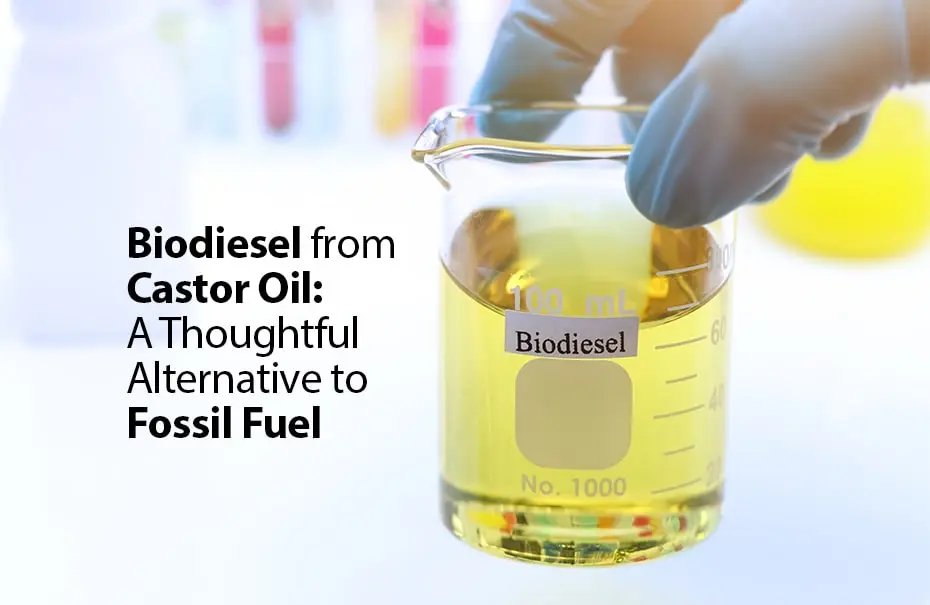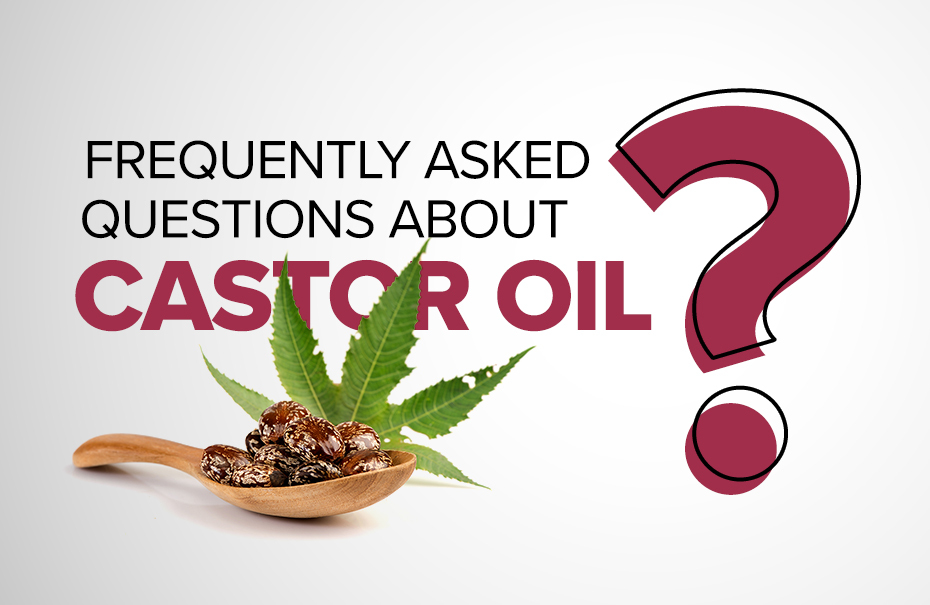Biodiesel from Castor Oil: A Thoughtful Alternative to Fossil Fuel

With people becoming conscious of the damage being done to the environment by themselves, a lot of eco-friendly options are emerging that are biodegradable, reusable, rechargeable, etc., Among them, there is one product that is bringing great relief as it is becoming the best and safest alternative to the biggest concern – fossil fuel and i.e. Biodiesel made from Castor oil.
What is Biodiesel?
Known to be an environmentally-friendly alternative to petroleum, biodiesel is a renewable and biodegradable variety of combustible fuels made from vegetable oils, animal fats, or waste cooking oil. It is being recognized as an incredible alternative to fossil diesel fuel – which we are consuming so fast that the rate of depletion of petroleum reserves has doubled, and it is our future generations who will suffer from our actions as scarcity may arise.
Not just the threatening decrease in fossil fuels, but other reasons like high oil prices, rise in greenhouse gas emissions, and climate change, all such factors are also causing the bend towards renewable fuels like Biodiesel. And why not? Biodiesel has several advantages as a renewable, biodegradable, and nontoxic fuel compared to conventional diesel, which emits harmful gases like CO2, SO2, CO, and HC into the air.
The term biodiesel refers to chains of fatty acids, mostly mono-alkyl fatty acid esters, that are produced by a variety of transesterification methods, including ultrasound, microwave, biological, and chemical. Today, biodiesel and biodiesel blends are used in nearly all diesel engines and vehicles without the need to make any modifications to the engines. However, despite its success and acceptance, it is still in its infancy, and the technology is still developing.
The Production Process of Biodiesel
The production of biodiesel depends on a variety of factors, including the free fatty acid content of the feedstock, the efficiency of the transesterification reaction, the ratio of alcohol to oil, and the type of catalysts. Also, several raw materials such as glycerides or vegetable oils having a high calorific value are used in producing biodiesel. However, raw vegetable oils extracted from energy and non-energy crops are considered to be the best so far for the cost-effective and efficient production of biodiesel.
Since edible crops are a food source, the preference for non-edible oily plants that have the adaptability to grow under local conditions (precipitation, soil, latitude, temperature, etc.), availability, high oil content, adequate composition, high adaptability with agricultural infrastructure, access to agricultural supplies (water, fertilizers, pesticides), ability to commercialize the different agricultural co-products generated as well as to obtain crops from marginal land is higher.
Next, after a particular oil-yielding plant is selected, the oil is extracted from its seeds, using technologies such as pressing extraction, solid-liquid extraction, or a combination of both, which then undergoes a chemical reaction that causes the transformation of the extracted oil and fats to produce biodiesel.
The three stages of transformation that oil undergoes are as follows:
- Base catalyzed transesterification
- Direct acid-catalyzed transesterification
- Conversion of the oil to its fatty acids followed by biodiesel.
Now for the production of biodiesel, the best suitable vegetable oil is castor oil and the method is base-catalyzed transesterification as it is economical and requires low temperatures and pressures, and produces a 98% conversion yield.
For transesterification of castor oil, alcohol, mostly methanol or ethanol, chemically reacts with the triglycerides (TGA) present in the castor oil; in the presence of either homogeneous or heterogeneous catalysts, such as sodium hydroxide, potassium hydroxide, or sulfuric acid to form esters and glycerol. During the process, the R-group of alcohol is exchanged with an R-group of an ester which converts natural fats and oils into Fatty Acid Methyl Esters (FAME) or Biodiesel.
The obtained biodiesel can be used directly in a neat form (100%) or blended with petrodiesel (25%, 50%, and 75%, commonly) only after it conforms to specific parameters established by different entities such as Standard Specification for Biodiesel Fuel Blend Stock (B100) for Middle Distillate Fuels (ASTM D 6751–06a) or European Committee for Standardization for biodiesel (EN 14214) to avoid potential risk to the vehicle engine.
Role of Castor Oil in the Production of Biodiesel
Biodiesel is produced by combining a type of alcohol—such as methanol—with a type of vegetable oil. Although, other substances, such as animal fats or recycled cooking grease, too, are considered to be excellent sources for obtaining biodiesel; vegetable oils such as rapeseed, soybean, cotton, peanut, corn, olive, sesame, safflower, and sunflower are preferred the most.
However, there arises a matter of concern with the use of such vegetable oils as they all are edible crops, and using them for the production of biodiesel is causing a shortage in food. Therefore, the castor plant emerged as a savior among all as it is a non-edible plant and it also yields a higher percentage of biodiesel than any other vegetable oil, thereby killing two birds with a single stone, which means using castor plant for the production of biodiesel won’t create food crisis while we get a great alternative to fossil fuel in higher amount with less production cost.
Castor oil is an excellent raw material in terms of price and quality because its seeds contain 40–55% of oil, which is very high compared to most other commonly used oil crops. Its cultivation also requires less investment in terms of fertile land, nutrient-rich soil, and water. Hence, overall, castor oil makes the best raw material for the production of biodiesel, than any other vegetable oil.
Also, castor oil is composed mainly of triglycerides and slight amounts of free fatty acids; thus, unlike other vegetable oils, castor has little variability in fatty acid content, which makes it more advantageous. In addition to 80–90% of hydroxyl fatty acid, ricinoleic acid, castor also contains small quantities of non-hydroxylated fatty acids such as oleic, linoleic, palmitic, stearic, and linolenic acids which even though increases its viscosity about 7 times higher than the one of other vegetable oils, still make the best biodiesel by blending with petrodiesel.
So, is Biodiesel the Future?
Yes, possibly it will be. Although biodiesel production from vegetable oils is under development, we may soon see it fully fueling all vehicles pretty soon because it will bring a significant change in the environment as it is – biodegradable, non-toxic, renewable, carbon-neutral liquid, which means its combustion never produces the net output of carbon in the form of carbon dioxide like other mineral diesel, is environmentally friendly, has lower emission of toxic gases, and can be produced from a non-edible plant like castor, hence does not have any issues or compromise food security.
Ambuja Solvex is one of the leading manufacturers of 100% pure, natural, and organic castor oil which is today in great demand by various industry sectors having years of experience in producing the best for them. Visit our site to know more about castor oil and its derivatives.



